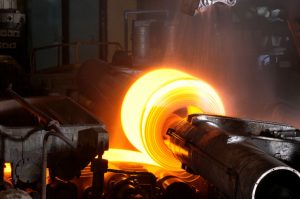Indian government prepares policy to develop steel clusters
The Indian government has prepared a draft framework policy for the development of steel clusters in the country, Manufacturing Today reported.
Work on the policy, however, started sometime in late 2019 but ran into a hurdle because of the COVID-19 pandemic.
Does your company have a steel buying strategy based on current steel price trends?
Steel clusters to generate employment, increase value-added output
The idea behind setting up such clusters is twofold.
First, the government wants to increase production of value-added steel. In addition, it wants to generate employment.
India’s job losses are running into the millions because of the pandemic.
Minister of Steel Dharmendra Pradhan made the announcement of the draft framework policy in India’s Parliament. The minister said the policy will aim to set up of greenfield steel clusters, along with development and expansion of existing steel clusters.
‘Self-reliant’
The Press Trust of India quoted the minister, who said when the clusters are eventually rolled out, they would make India “self reliant” in value-added steel and capital goods.
Additionally, the clusters would generate employment, especially in the eastern part of the country, including the states of Chhattisgarh, Jharkhand, West Bengal, Odisha and Andhra Pradesh.
The Ministry of Steel launched the so-called “Purvodaya initiative in January 2020. The initiative’s goal is to accelerate the development of eastern India through integrated steel hubs. To put it in perspective, through the hubs, India has the potential of adding over 75% to its steel capacity.
That means this region can contribute 200 million tons of capacity. As such, that total would go a long way toward the overall aim of 300 million tons of capacity by 2030-31.
The steel cluster idea is modeled along the lines of similar hubs in Korea, China and Germany, the Hindu Business Line reported.
Each of these hubs will come up in proximity to integrated steel plants and steel demand centers. The hubs will then enable capacity expansion through provision of a cohesive ecosystem. Such an ecosystem includes effective forward & backward linkages, single-window mechanism for swift approval of clearances and best-in-class logistics infrastructure.
The clusters around integrated steel plants will be “ancillary” and downstream clusters, per the report.
The 5 Golden Rules for Sourcing Steel



Leave a Reply